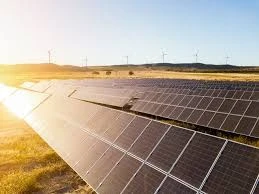Exploring the Benefits and Challenges of Solar Photovoltaic Technology for Sustainable Energy Solutions
Understanding Solar Photovoltaics Harnessing Sunlight for Clean Energy
In the quest for sustainable energy sources, solar photovoltaics (PV) have emerged as a beacon of hope. By converting sunlight directly into electricity, solar PV technology is not just a scientific advancement; it represents a paradigm shift in energy production. As we face the looming threats of climate change and depleting fossil fuel reserves, it is essential to explore the mechanisms, benefits, and future prospects of solar photovoltaic systems.
How Solar Photovoltaics Work
At the core of solar PV technology are photovoltaic cells, typically made from silicon, a plentiful and affordable material. These cells work based on the photovoltaic effect, discovered in the 19th century. When sunlight hits the photovoltaic cells, it excites electrons, generating a flow of electricity. This process involves a few key components
1. Photovoltaic Cells The fundamental building blocks, converting sunlight into electricity. 2. Inverters These convert the direct current (DC) produced by the cells into alternating current (AC), which is usable in homes and businesses. 3. Mounting Systems These structures hold the panels in place, ensuring they capture maximum sunlight. 4. Battery Storage (optional) Many systems incorporate batteries to store excess energy for use during non-sunny periods.
Advantages of Solar Photovoltaics
The adoption of solar PV technology comes with a plethora of benefits
1. Renewable Energy Source Solar energy is inexhaustible. As long as the sun shines, we can harness its power, thereby reducing reliance on finite fossil fuels. 2. Reduction of Carbon Emissions By utilizing solar PV systems, individuals and organizations can significantly decrease their carbon footprint, contributing to global efforts against climate change. 3. Decreased Energy Bills Homeowners and businesses can save on electricity bills by generating their own power. In many regions, excess energy can even be sold back to the grid, providing an additional revenue stream. 4. Job Creation The solar industry is a significant source of employment. From research and manufacturing to installation and maintenance, the sector creates diverse job opportunities, fostering economic growth. 5. Energy Independence Solar PV promotes energy independence by allowing regions to generate their own electricity, reducing vulnerability to foreign energy fluctuations and political instability.
solar photovoltaic

Challenges Ahead
Despite the clear advantages, solar PV technology faces several challenges
1. Initial Costs The upfront installation costs can be high, though prices have been decreasing over the years due to technological advancements and increased competition. 2. Intermittency Solar energy production is dependent on weather conditions and time of day. This variability necessitates the development of effective energy storage solutions and grid management strategies. 3. Space Requirement To generate substantial amounts of power, large areas are often needed for solar panel installations, which can be a concern in densely populated areas.
The Future of Solar Photovoltaics
The future of solar photovoltaics is bright, characterized by ongoing innovations and growing investments. The rise of transparent solar panels could transform windows into energy-producing surfaces, allowing buildings to generate power without sacrificing aesthetics. Additionally, improvements in energy storage technologies are poised to tackle the intermittency issue, making solar energy more reliable and accessible.
Governments worldwide are increasingly recognizing the importance of transitioning to renewable energy sources, leading to policies and incentives that encourage the adoption of solar technologies. As we move toward a greener future, solar PV stands out as a vital solution in our toolkit to combat climate change and ensure sustainable energy for generations to come.
In conclusion, solar photovoltaics represent not only a time-tested method of harnessing solar energy but also a promising avenue to achieve a sustainable, clean, and energy-efficient future. As technology advances and society embraces these innovations, the role of solar PV in our global energy landscape will become increasingly significant, illuminating a path toward a greener planet.
-
String Solar Inverter: The High-Efficiency Solution for Smart Solar EnergyNewsJul.14,2025
-
Revolutionizing Rooftop Energy with the Power of the Micro Solar InverterNewsJul.14,2025
-
Power Independence with Smart Off Grid Solar Inverter SolutionsNewsJul.14,2025
-
On Grid Solar Inverter: Powering the Future with Smart Grid IntegrationNewsJul.14,2025
-
Monocrystalline Solar Panels: High-Efficiency Power for the Future of Clean EnergyNewsJul.14,2025
-
Bifacial Solar Panel: A Smarter Investment for Next-Generation Energy SystemsNewsJul.14,2025







